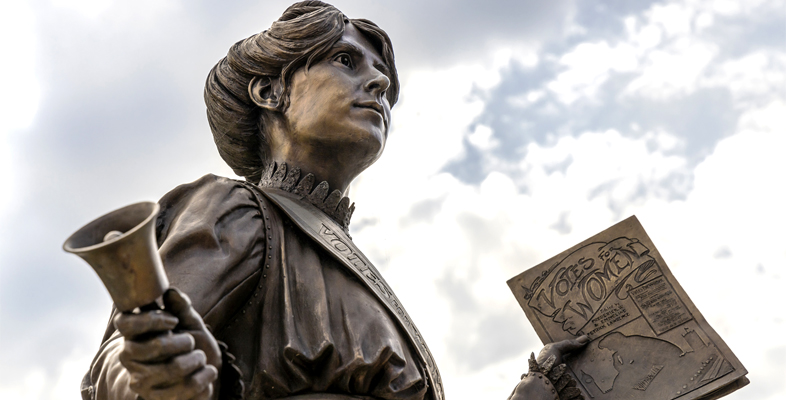5.3 Were suffragettes terrorists?
As the years went by, and hopes of new legislation on votes for women were dashed, the WSPU’s methods became more extreme. One approach was to burn down buildings during the night – they were checked beforehand to make sure that no human or animal was present inside. The country house of the leading Liberal politician David Lloyd George was fire-bombed in February 1913.
Another tactic was vandalising paintings and other valuable objects in galleries and museums (targets included the Velázquez painting popularly known as ‘The Rokeby Venus’, which represented the Goddess of Love as a female nude), and many ended up being closed to women or to the public in general.
There were real dangers of a public backlash against this sort of extreme action, especially in the last desperate years of protest between 1912 and 1914. Increasingly, indignant men were physically attacking WSPU members, shops and offices, and driving the movement underground.
Then, in August 1914, the narrative abruptly changed with the outbreak of the First World War. The women’s suffrage societies stopped most of their activities for the duration of the war. Exactly how events might have unfolded without this dramatic rupture in history, we will never know, though many books and other scholarly sources debate this question (see, for example, Martin Pugh’s ‘Epilogue: War and the Vote’ in his book The March of the Women (2000)). You’ll return to this question later in the course.
It’s possible to look further into the militant activities of the WSPU by considering another type of source available to you on the internet. There is a growing archive of television and radio programmes, including historical documentaries, to be found there.
Activity 7 The things we forgot to remember
This activity has two tasks.
In this activity you will explore a radio programme from the series Things We Forgot to Remember, which has been split into two clips for Tasks 1 and 2 below. Listen to each clip, and, either in the text box provided or in your learning notebook, answer the question asked following the first audio and carry out the task set following the second.
Task 1
Listen to the following audio.
Transcript: Audio 1 Things we forgot to remember, clip 1
[Music.]
[Music.]
What tactics did members of the WSPU use or consider using in their campaign?
Discussion
You might have written about:
- arson
- destruction of property
- bombing
- assassinating the Prime Minister.
Task 2
Now listen to the next audio.
Transcript: Audio 2 Things we forgot to remember, clip 2
Summarise the difference of opinion between Krista Cowman and June Purvis over the issue of whether or not members of the WSPU can be described as ‘terrorists’.
Discussion
Krista Cowman is prepared to admit that the WSPU used tactics that could be described as ‘terrorist’. However, June Purvis resists this description of their campaign. Whose views did you find yourself closest to as you were listening?
This activity has demonstrated once more that it’s important to investigate the range of opinion on a topic, as well as the purpose and possible bias of a particular source.
